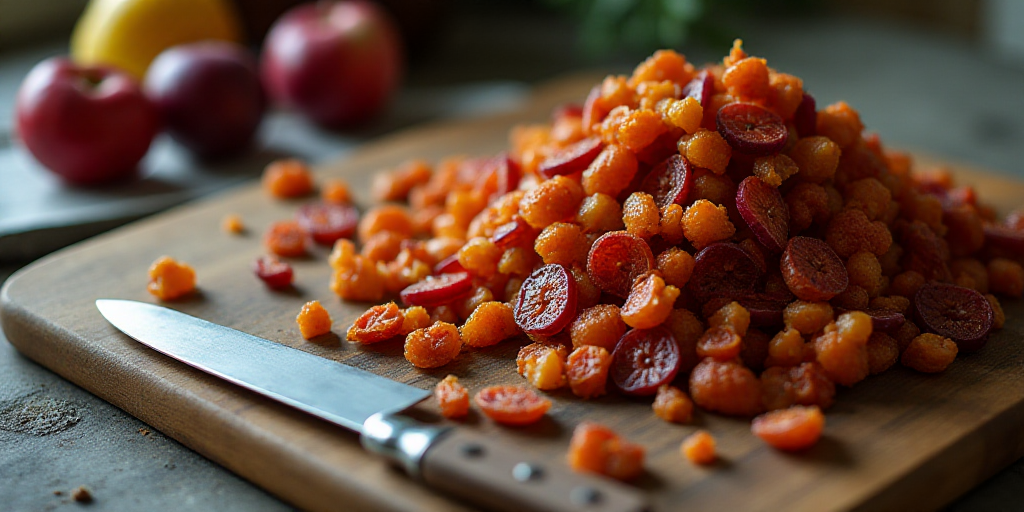The Unique Transformation of Mexican Chiles
In Mexican cuisine, a single ingredient can have multiple lives. This is the case with chiles, which not only intensify their flavor but also acquire a new identity and purpose when dried. This isn’t a naming error or a whim of popular language; it’s culture, tradition, and living cuisine.
The jalapeño transforms into a chipotle, the poblano becomes ancho, and the chilaca turns into pasilla. With each drying process, the nature of that chile changes so much it requires a new name to reflect this transformation.
A Culinary Tradition Rooted in Preservation
This phenomenon, deeply embedded in Mexican gastronomy, is merely a manifestation of culinary ingenuity and ancestral preservation. Drying chiles was, at one time, a form of conservation. Today, it’s also a way to create complex, sweet, smoky, earthy flavors that enrich Mexican dishes.
Key Chile Varieties and Their Dried Counterparts
- Serrano: More piquant, ideal for raw sauces like pico de gallo.
- Poblano: Mild, large, and fleshy, the favorite for chiles en nogada.
- Chilaca: Long and mild, the base of many cooked sauces.
- Habanero: An icon of southeastern Mexico, extremely piquant, present in Yucatecan cuisine.
- Bola or Manzano: Firm, juicy, slightly sweet, popular in pickles.
Chiles Secados: Complexity, Depth, and Character
Dried chiles not only add flavor but also color, aroma, and density to dishes. Some of the most important ones are:
- Ancho: Dried poblano, sweet flavor, notes of chocolate, essential in mole poblano.
- Pasilla: Dried chilaca, smoky flavor, deep, excellent for black sauces.
- Guajillo: Derived from mirasol, bright red color, mild and sweet, ideal for adobos and broths.
- Chipotle: Dried jalapeño, potent and piquant, present in adobos and sauces with personality.
- Mulato: Darker than ancho, with notes of plum and coffee, central in Oaxacan mole negro.
- Cascabel: Round, with seeds that rattle, mild flavor and nutty aroma.
A Nation That Names What It Transforms
The tradition of changing the names of chiles based on their state responds to a cultural logic: Mexico names what it transforms. It’s not just a linguistic curiosity but a way to recognize that cuisine is evolution. The different names for the same chile, fresh and dried, are also a map of Mexico’s gastronomic richness.
In few culinary traditions worldwide is there such a level of classification and utilization of a single ingredient as with Mexican chiles. From pre-Hispanic times to contemporary haute cuisine, the chile has been an element, symbol, and seasoning.
Today, chefs and cooks reinterpret the flavors of dried chiles with modern techniques. The mulato appears in emulsions, the chipotle in fermentations, the guajillo in fond and foams. What was once preservation is now innovation. But the essence remains the same: the chile as the grand conducting thread of Mexican cuisine.
Key Questions and Answers
- Q: Why do Mexican chiles change their names when dried? A: This is a culinary tradition deeply rooted in Mexican gastronomy, reflecting the evolution of cuisine and the richness of its gastronomic heritage.
- Q: How do dried chiles impact Mexican dishes? A: Dried chiles add complexity, depth, and character to Mexican dishes, contributing color, aroma, and density.
- Q: What are some key chile varieties and their dried counterparts? A: Key varieties include Serrano, Poblano, Chilaca, Habanero, Bola or Manzano, Ancho, Pasilla, Guajillo, Chipotle, and Mulato. Each has a distinct dried counterpart that contributes uniquely to Mexican cuisine.






